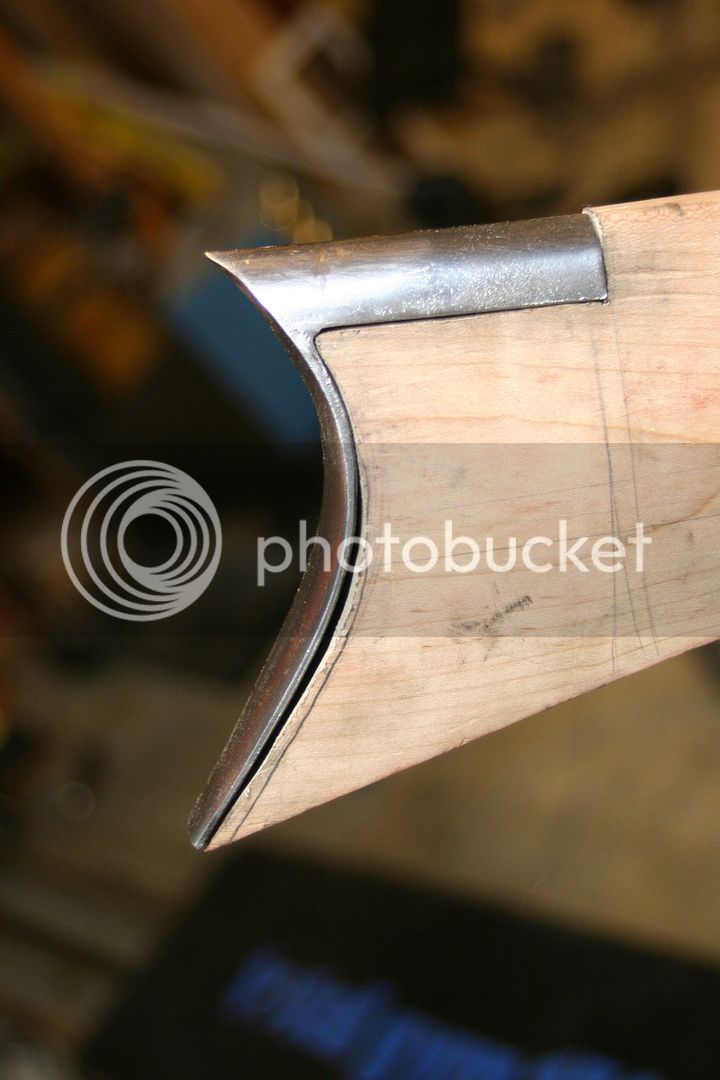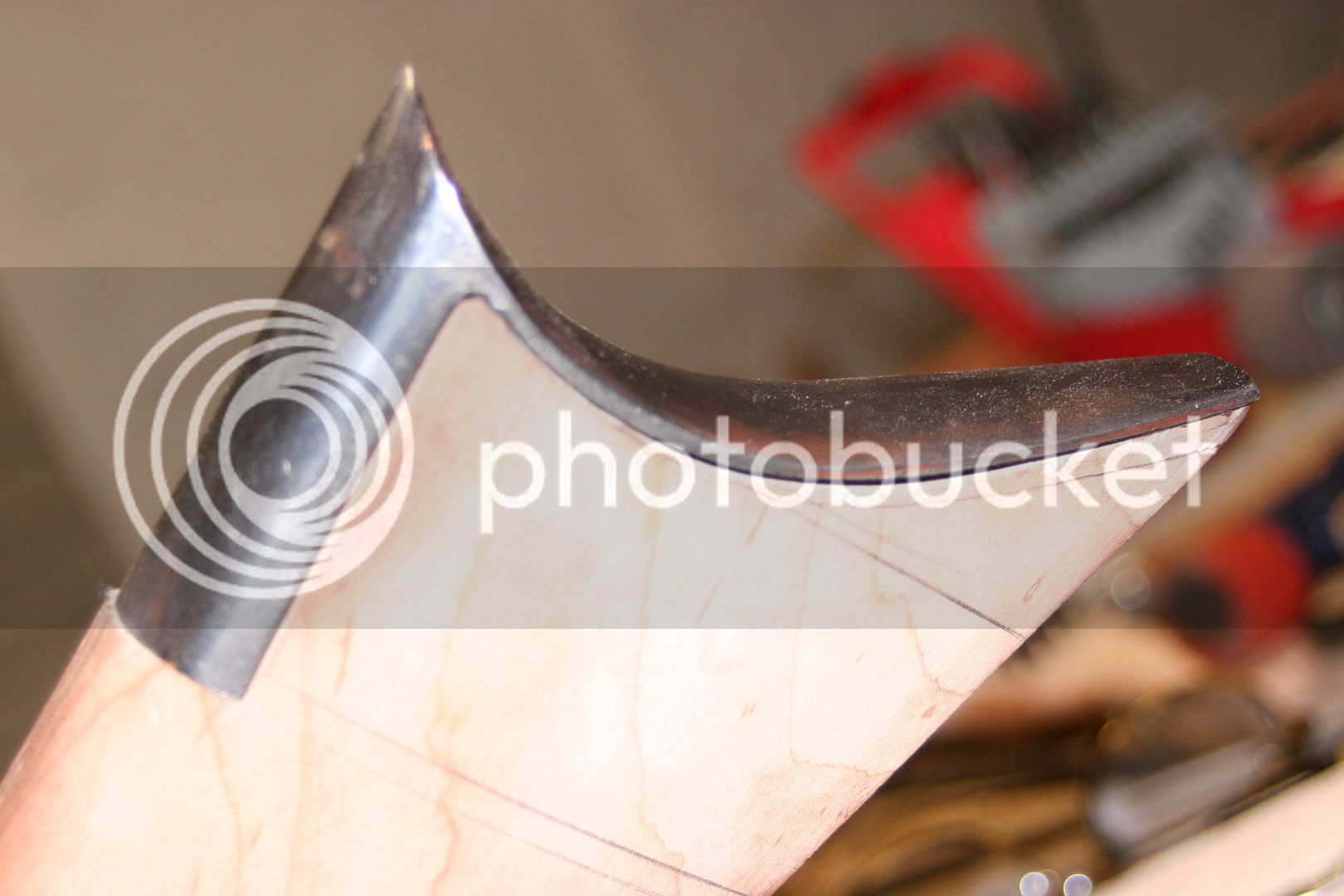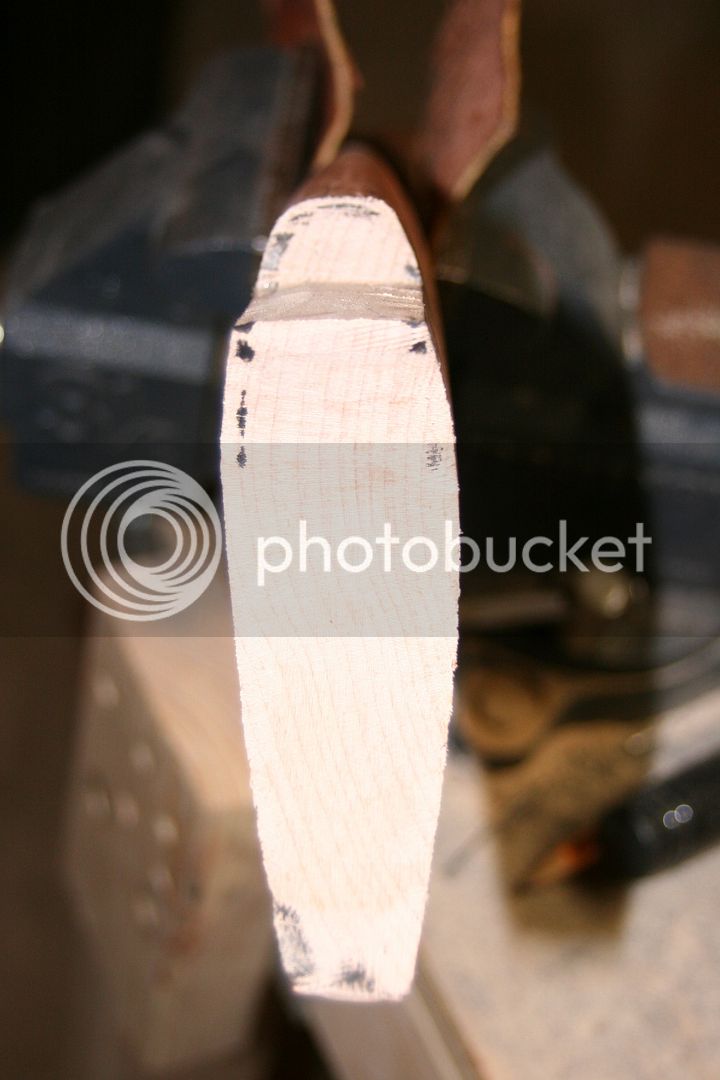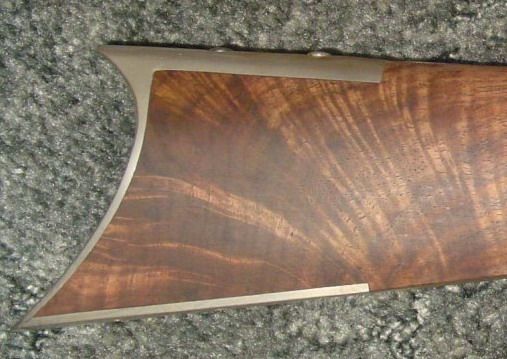I don't know if this has been mentioned yet, but it's important to smooth up the contact surfaces of the buttplate before you start to fit it to the wood. For instance, on the upper return part, get those two "rails" parallel, flat, straight, and smooth. The front face should be perfectly flat as well. Make sure the curve of the vertical part is smooth and continuous, with no irregularities. Otherwise, any lumps, bumps, or divets are transfered to the wood, which makes it a real pain in the you-know-what to get a tight fit. Can't tell if you've already done all that, so just throwing it out there.
I do use a rattail file for the curve, and a flat file for the return, but only to get it in the "ballpark". For the final fit, it's chisels and gouges, mostly scraping in the end. Good luck. Bill








